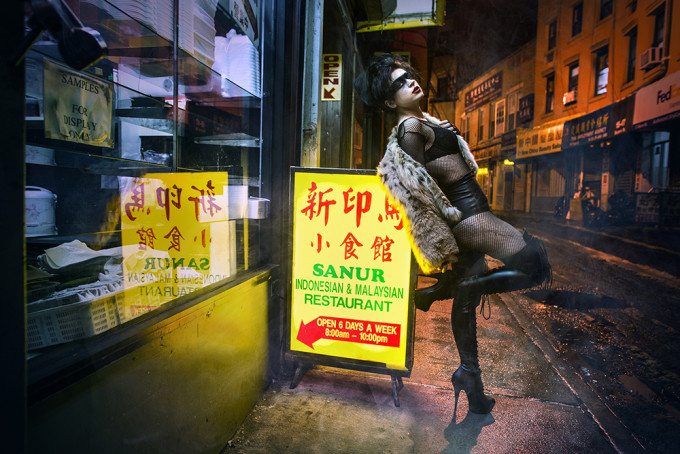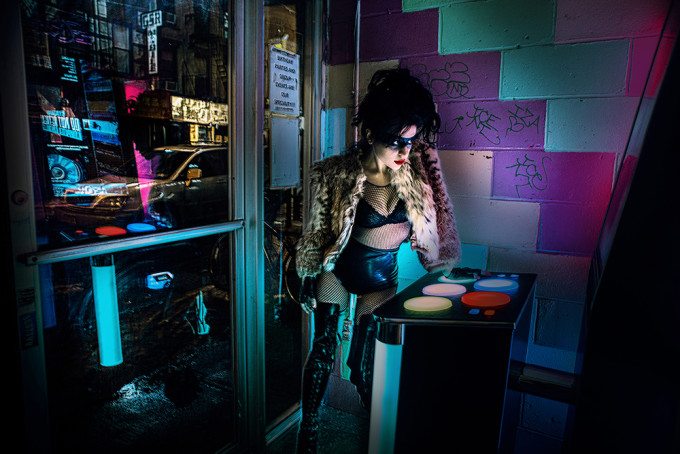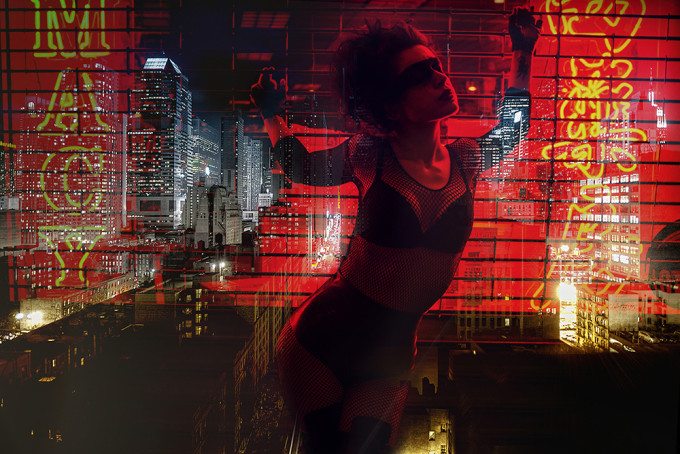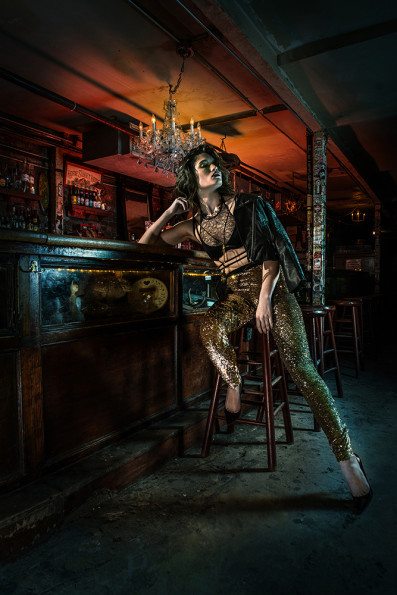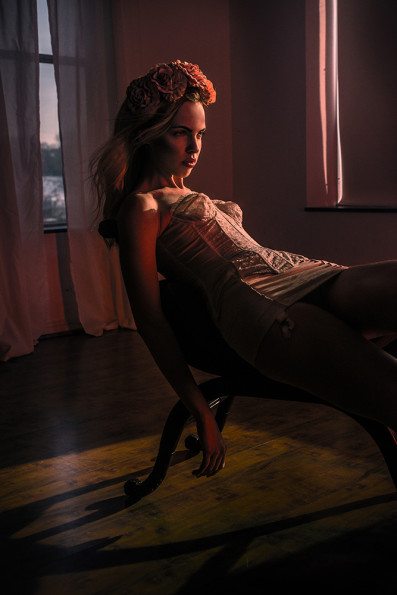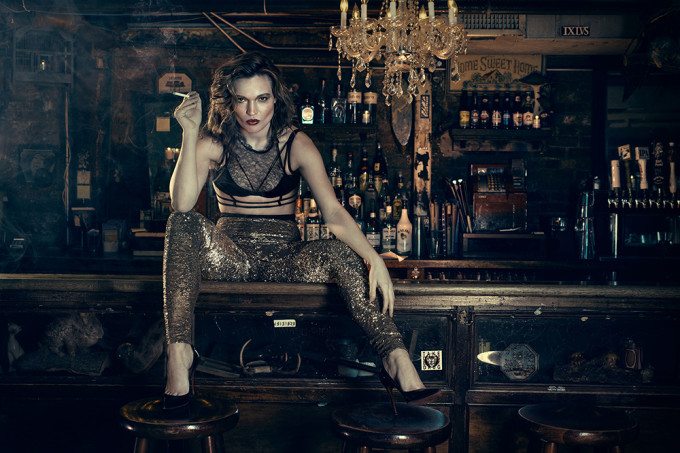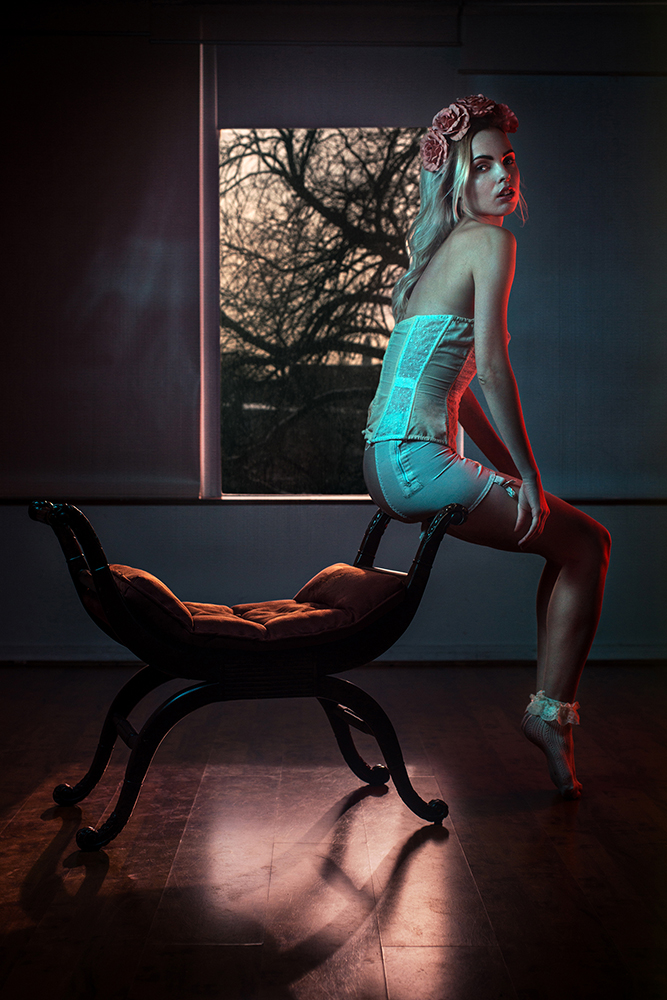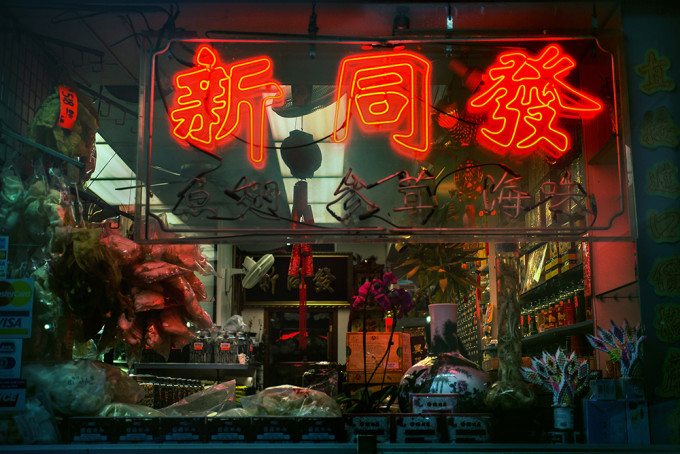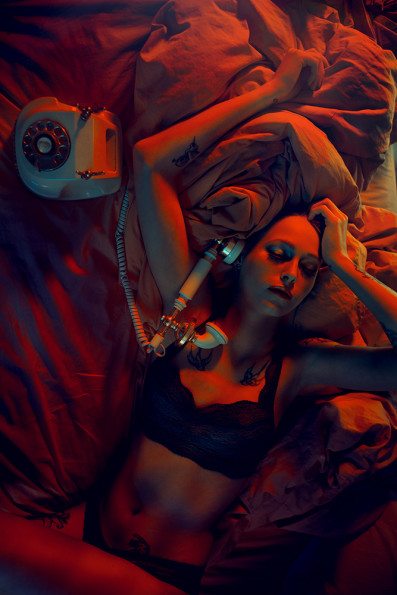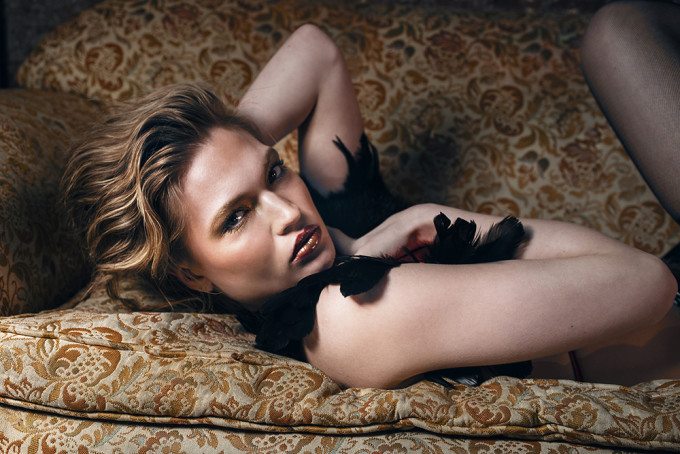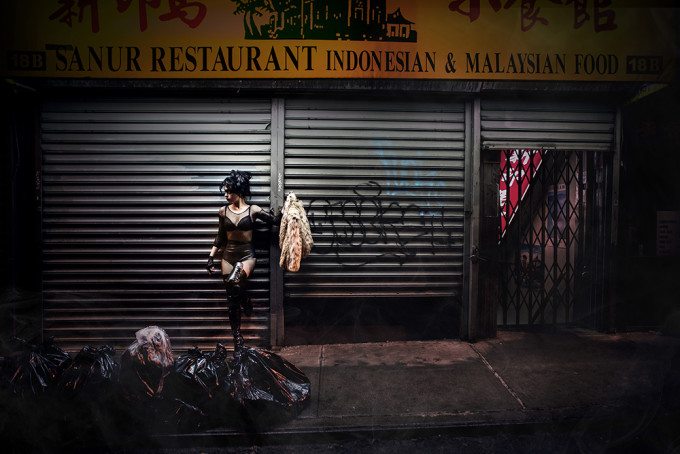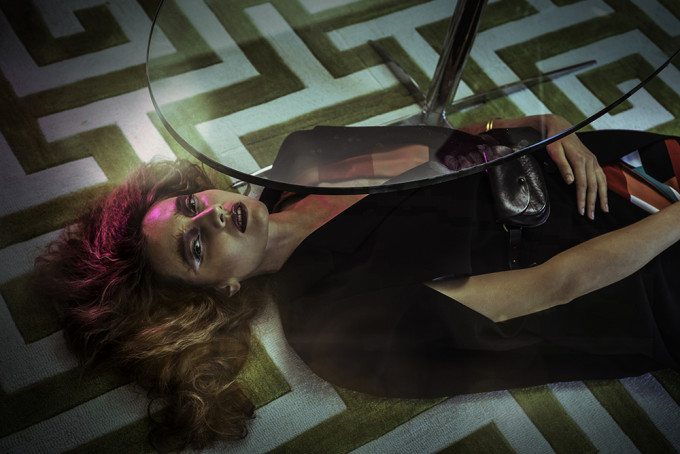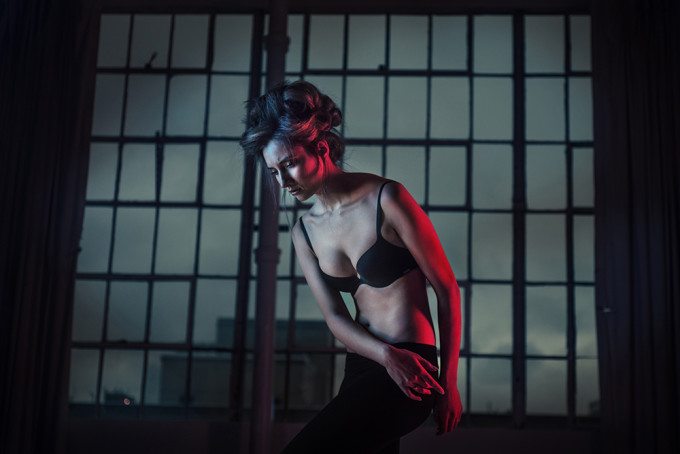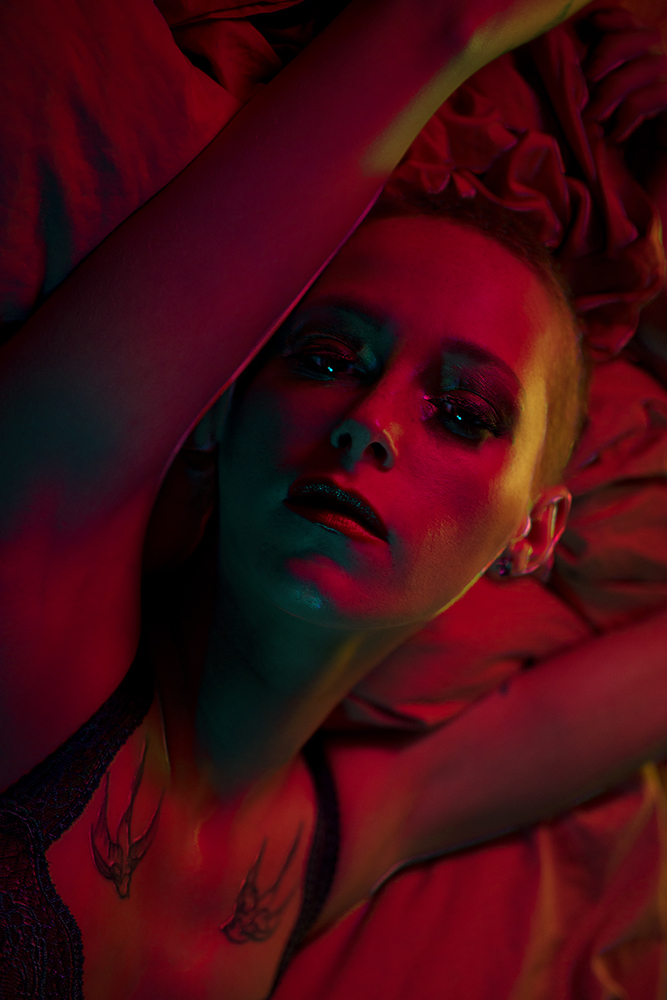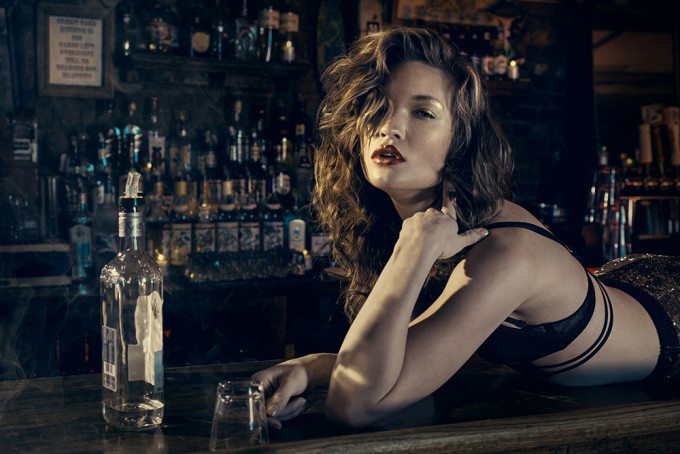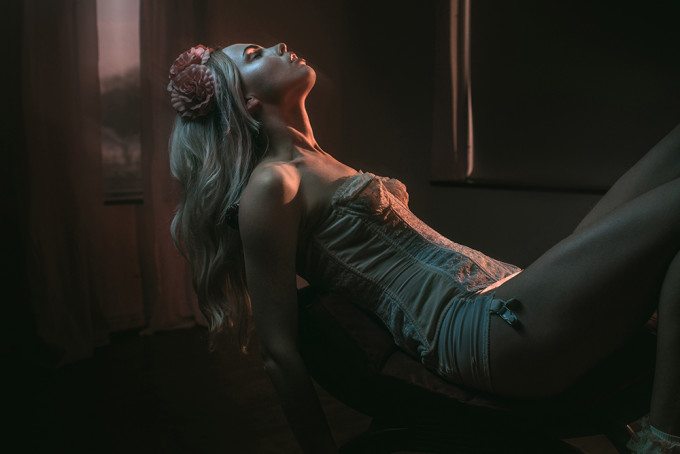All images by Gina Manning. Used with permission.
Photographer Gina Manning is a high-concept fashion photographer that brings a cinematic quality to every shoot she designs–and many of her photos remind me of comic books and similar stylizations. She’s also a huge lover of film.
Moving between NYC and Boston often, Gina is inspired by many of the things around her. From her earliest days, she used to drive for a while and get lost in photographing landscapes. That work and mindset evolved into doing portraiture and editorial work when we took a gig at the Boston Phoenix.
According to Gina, lots of work and concepting goes into the process of making a single image.
Phoblographer: Talk to us about how you got into photography.
Gina: I have always been enamored by the idea of expressing myself through photography. Ever since I can remember I’d spend my free time as an only child with my basic little digital point and shoot (whichever one I hadn’t lost yet). I’d put together little scenes in my bedroom with my toys trying to find weird new ways and angles to capture them, maybe through the reflection of a laminated DVD cover or my shiny toy purse. I’d torment my cats with my flash, nothing was safe. I just never got tired of pressing that button. As soon as I got my license, I’d drive out to wherever I could find the most beautiful landscapes and get lost for the day. It carried over into adulthood as a hobby when I brought my camera to all the parties in college, capturing everything and everyone alongside their mistakes of the night.
After taking my first film photography course in college and spending most of each day in the dark room, I pretty much knew it was what I was going to do with my life. Finding out how to make money doing it was the first hard step. Being able to tell my family I was going to pursue art, and be able to “support myself” in the beginning was tough because even I didn’t know how it was all going to come together. I had a couple friends who were in the nightlife scene, so I started sneaking my camera into the clubs to take some pretty awful photos. But people still loved them since they were getting free photos of themselves.
I never wanted to be a nightlife photographer but I learned quickly that nightlife would be a pivotal stepping-stone into the photography world for me. Although the nightlife scene can be brutal with their photographers, it led me to meet the right people and have my work seen by a bunch of folks, and quickly. I’d shoot almost every night of the week at any gig that would hire me. In the end, it was also an amazing time for me to play around with my craft and find out what I liked about it all, not to mention a speed course in learning how to interact with people as a photographer.
Phoblographer: How did you get into portraiture and Editorial work?
Gina: It was through my nightlife work that I moved into the editorial world. At first, as a photojournalist – I remember when The Boston Phoenix first approached me; they were one of my favorite magazines at the time! They had a feature on bartenders and their beer cocktails and they wanted me to recreate my “nightlife style” for the spread. You better believe I did everything in my power to blow that shoot out of the water. T
hey loved it and I became a regular contributor and frequent cover photographer for them. It continued from there by making and keeping good connections with the writers and editors I’d meet on each shoot and constantly providing reliable work.
I ended up getting into fashion, my true passion, by building a personal portfolio on my own time and using that to connect with the people I wanted to work alongside. I actually started calling myself a fashion photographer before I had even shot anything fashion; I played the part long enough to fall into it. It was incredibly scary but so rewarding.
So often in our industry there’s seemingly “no way” into the things you want to be doing because people only want you if you’re doing them. For example, I wanted to shoot for fashion magazines but they wouldn’t hire me because my nightlife work wasn’t going to cut it as my portfolio. I had to go out and shoot fashion with people who trusted I would translate my art into a new genre smoothly. Along with making mistakes and studying everything I could on the Internet, I learned how to run big shoots by being on the sets of photographers I admired. I took the time to learn all that I could from them.
Phoblographer: Considering the body of work that you specifically curate in your portfolio, where do you feel you draw most of your inspiration from? They seem almost like comic books or like from Sin City but in color!
Gina: I’m obsessed with color. My fascination with color has been constant, and often my choices in color aren’t crowd favorites – but I stick to my gut. The work in my portfolio is only a very small fraction of the work I’ve created but it’s the work I want to be creating now and in the foreseeable future. I want to be known for my conceptual fashion photography; for the unique way I light my subjects to the awkward stories they expose. I want to continue to tell stories with my art because it’s the only thing I love to do, it’s the only thing I do that truly fascinates me. I’m constantly inspired by my short attention span, by my instant gratification, by my emotions.
I started shooting in my stylized way to tell a story about Fear. Fear was the first inspiration for my concept work, and it continues to fuel my imagination. When I brainstorm for a shoot I will start with an idea, a dream, something I thought about that made me feel uncomfortable, or too comfortable and then I will take the time to create a story that I would want to hear around it. When it comes to color and the look, I’ve got this pop art way of seeing things.
I have always loved the way a city street looks at night just after it has rained. All the colors blending together and reflecting off of every surface that it couldn’t before, shiny and unforgiving. I love locations that are their own character and I love strong women that aren’t afraid to look fragile. I love clothes, and I love style… the more abstract the better. I like photographers and creatives such as Steven Klein, Paolo Roversi and director Dario Argento who don’t create to please the technical but rather the imaginative. They create for those who love to be taken from their daily routine into a new world. So, I curate my portfolio by my own personal fascination and I don’t believe in showing any work I don’t want to be known by. I am selective because I have a goal, and I am always looking to climb that exact mountain.
Phoblographer: You’ve got a very dynamic way that you go about mixing colors, lighting, poses and all that jazz together. How much concepting goes into each image that you create?
Gina: The short answer; SO MUCH! I like to have as much planned out as I possibly can before I shoot my heavy concept work (I break down a lot of the prep necessary on those shoots in the blogs on my website). I do as much technical, logical and creative planning as one can do beforehand to give me optimal time to be absorbed in the creative process once I finally get on set. Of course, we don’t live in a perfect world and something always goes differently than planned but if you’ve done your homework, you’ll always be better prepared.
Shooting for me is an incredibly immersive and evolving process. On one shoot I may know exactly what I want from each shot and execute it that way. On another I may get there, set-up and then find that once we get into the shooting dance that I need to switch things up. I may have been inspired by something more dynamic, something that would take the shoot to the next level. It might be the way the model moved that was too beautiful not to take time to focus on, or the way light is picking up in the location that I didn’t foresee. I’m not opposed to changing things if I know it will enhance the photos. I do prep every step for a big concept shoot, but when I’m shooting I let the moment take control. I stay flexible so I don’t end up stumped on set because I was too focused on one thing.
When it comes to lighting, if possible – I always go the location beforehand to scout and see what’s in store. Then I will prep a lighting design so the gaffers on set knows what they’re in for! I usually mix my colors on set because you never know what will look best until everything is in place. And as for posing, I don’t believe in taking away from each model’s look and attitude in front of a camera. I always send over an extensive mood board so they know the vibe and feel of the shoot is going to be, but when we get to set I let them get acquainted with the location the way they see fit. We’ll work together pulling the best looks and posing from there. I chose a certain talented artist so they could bring to the table what I love the most about what they do, not so they can do things the exact way I want them to. I choose people who fit the vibe I’m looking for. You just get better photos if you’re open minded, if you let others bring their ideas to the table to help make your vision as beautiful and dynamic as possible.
Phoblographer: How do you feel lighting effects your creative vision?
Gina: Lighting is such a huge part of my creative process. It can dictate the entire vibe of the shoot, it changes the way we see the world. You can light the same thing a million different ways and attach a million different emotions to it. I am so inspired by emotional lighting. Like the smoky alleyway with one lonely cook sitting on a step, smoking a cigarette, staring at his worn shoes before re-entering his hot kitchen again. He’s only visible by the one old streetlight above his head as he catches his first breath of “fresh air” in hours.
Then there’s the angelic halo that is golden hour. Lighting is imperative on all of my photo shoots and the way I see things, whether it’s natural lighting or artificial. I need the light to be adding something to the photograph. I need it to be saying something. I love manipulating light, and obviously, I love giving light color. I’ve never been a fan of keeping light realistic, only using light that “makes sense” logistically in the setting of the photograph. Why does there need to be a reason for why she is lit by red and purple? There doesn’t always have to be a car with its taillights on and she doesn’t need to be in a club. She’s lit by red and purple because she’s in one of my photographs!
Phoblographer: How do you go about figuring out what photos are best shown in your portfolio and which aren’t? What questions do you end up asking yourself?
Gina: I have to be in love with the photograph for it to make the cut. I am proud of my work because I spend so much time on making it look the way it does that in turn, it becomes a part of who I am. I don’t believe in being an artist that doesn’t think their work is good enough. If you’re serious about your passion and becoming a full time / successful artist, you have to think you’ll make it because if you don’t – how do you expect others to think otherwise?
I spend so much time constantly critiquing my body of work as I grow. It’s also ok to move on from old work you just don’t think represents where you are now. Another thing that helps me pick and choose what makes my portfolio is looking over my work with other people and getting their insight. I ask myself if the people reviewing my work are getting the right first impression. I check if it all tells a story, and if the order you view it in flows. I make sure the layout of the website is right for the set and decide which sets of photos should get their own categories, like chapters in a book.
Phoblographer: Lots of professional photographers know that working in this industry is all about networking. So how did you go start getting the gigs that you did and how did you continue to get more of them?
Gina: Networking IS key! Throughout my career it has been the people I’ve met and the places I have showcased my work that keep leading me to where I am and continue to grow towards today.
I was given a lot of open and diverse exposure when I shot nightlife, and that led me into print media. Then I met many freelance writers and wonderful connections when I shoot for a magazine, which would spread to the other magazines they were working for. Once you have a foot in the door, whatever it may be – it’s good connections that will keep you relevant in the industry. There’s no reason not to be courteous to the people around you involved in the things you want to be a part of. And just be sincere in general, because you really never know who you’re talking to sometimes. Networking with other photographers has also been very beneficial. Being open, kind and helpful to my fellow creatives has led me to pick up work and recognition as well. Not to mention when you surround yourself with the right creative’s it can fuel you to be a better creative. I have so many wonderful photographer friends I work alongside and have shared opportunities with! Building a good foundation is great in a relentless business.
Phoblographer: Where do you see yourself in one year as a photographer and what’s your plan on getting to that stage?
Gina: In one year, I want most if not all of my fashion work coming from NYC as every time I am working out there the resources and abundance in talent overcome me! I also want to be agency represented by this time next year. I will get there by continuing to shoot, connect with people and promoting my photography.


